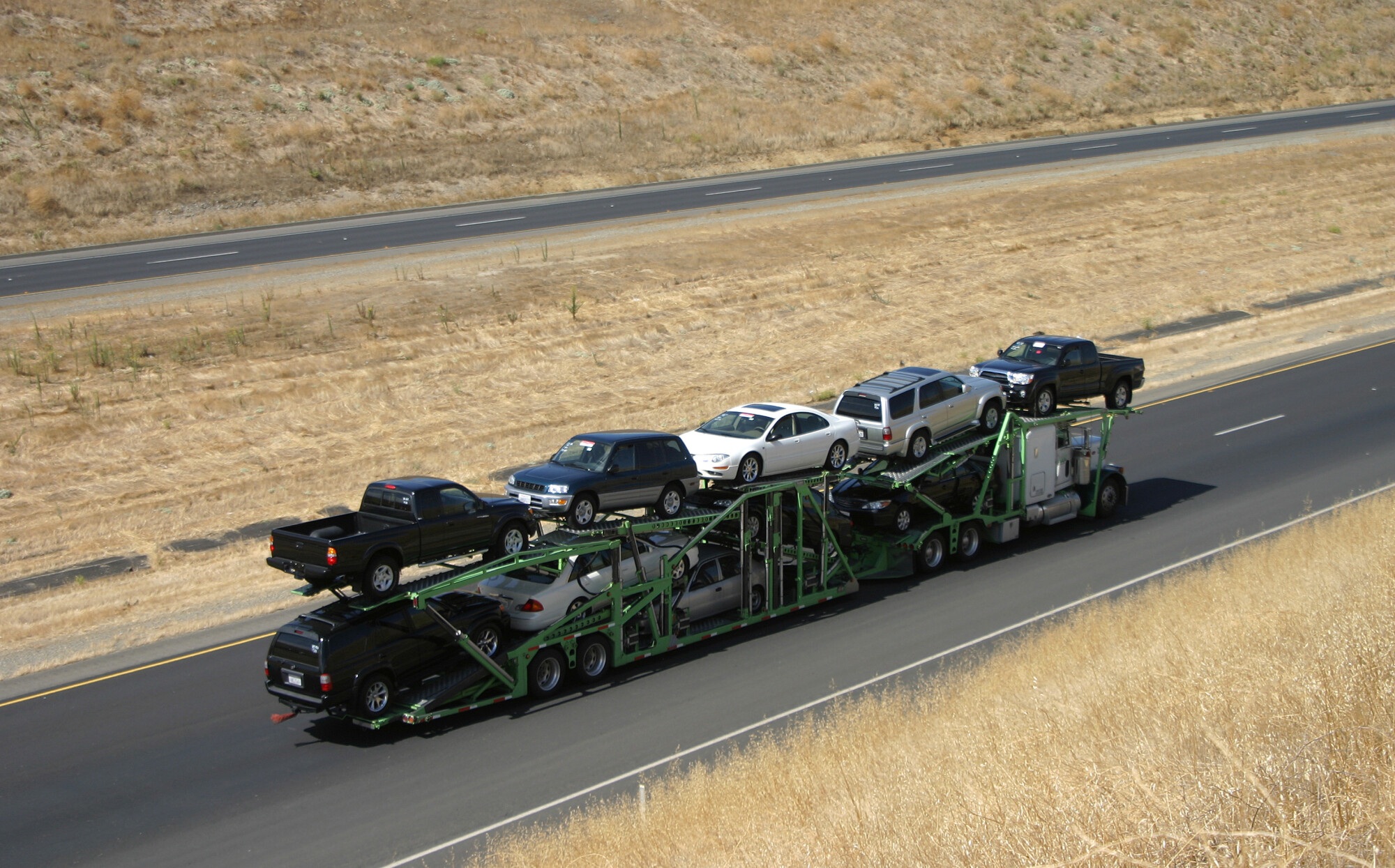The demand for auto transport is steadily increasing, underscoring the importance of knowing how car shipping insurance works. Insurance protects against unforeseen events during transit, such as damages or losses, ensures legal compliance with transport regulations, and gives drivers peace of mind.
It’s vital to clear up misconceptions surrounding auto shipping insurance, such as the idea that personal policies always cover transport or that all carriers offer the same levels of protection.
In addition to clearing up these misconceptions, our guide highlights different insurance options, discusses verifying and understanding carrier coverage, how to navigate limits, and more.
Keep reading to get up to speed on this essential topic.
Basics of Auto Transport Insurance
Auto transport carriers are required by law to offer insurance. Carriers directly transport your car with their truck fleet, whereas brokers connect customers to carriers via their networks. All carriers in the US must have liability insurance, which protects them against damage to vehicles or property during transit. Carriers aren’t always required to have cargo insurance, which protects the driver from damages or losses during transport, but most do.
Auto shipping companies typically offer cargo insurance coverage between $100,000 and $150,000 for open carriers, exposing your car to road and weather elements during transit. Cargo insurance for enclosed carriers is often between $250,000 and $300,000. However, coverage is often divided among all vehicles on a carrier or trailer, which could leave your car undervalued.
Additional Types of Auto Transport Insurance
Your personal vehicle insurance policy may cover damages or loss during transit—but not every policy will, so it’s essential to check with your provider. If your policy does have auto transport coverage, you’ll need to verify protection levels.
Brokers typically offer supplemental insurance, which is coverage that generally comes as a third-party policy. Supplemental can cover damages beyond a carrier’s standard limits. You might sometimes hear supplemental insurance referred to as gap insurance.
Understanding Deductibles and Choosing Coverage Limits
A deductible is the amount you pay before an insurer covers the remaining damages. Car shipping deductibles often range from $200 to $2,000, with $500 considered a standard rate. Basic cargo insurance is complimentary and offered by most auto transport companies. When choosing appropriate coverage limits for car shipping, start by assessing the value of your vehicle. Drivers with higher-value cars will likely want enclosed transport since this shipping method has higher average coverage limits than open carriers.You’ll always want to ensure that your policy covers the full value of your vehicle—no matter its value, while keeping in mind that cargo insurance is generally divided between all of a carrier’s vehicles. For example, a carrier with eight vehicles and $100,000 of cargo insurance would theoretically leave your car with $12,500 worth of coverage. Chances are this isn’t enough protection if you’re driving a high-value vehicle like a luxury, modified, or classic model. Coverage per car can vary based on the carrier and policy.
Factors Affecting Auto Transport Insurance Costs
Distance and route are two primary factors impacting auto transport costs, as longer shipping distances present a higher likelihood of damage, and specific areas may include regions with greater chances of harsh weather or crime.
The value of your car and seasonal variations also play central roles in this cost. During peak season, which generally runs from June to August, insurance prices are generally higher, with more shipments increasing damage risks. Despite the possibility of inclement winter weather, lower auto transport demand typically lowers insurance costs.
What’s Typically Covered
Auto transport insurance often covers road hazards and accident damage since they’re some of, if not the most significant shipping risks. Road hazards can include damage from road irregularities like potholes or flying debris, while accidents could consist of collisions with other vehicles, objects, or damage during loading/unloading. Damages from weather, theft, or vandalism typically receive coverage from a standard policy. Still, some carriers may require you to spend more on a comprehensive policy for protection from these risks.
Exclusions and Limits
Verifying exclusions and limits should be a significant part of reviewing your auto-shipping coverage so you don’t get blindsided. For example, some carriers provide cargo insurance protection for damage during weather like hail but categorize more extreme weather patterns as “acts of God” that aren’t often covered.
You also typically won’t get coverage for normal wear and tear during your car’s journey, damages caused by a defect in the vehicle, otherwise known as an inherent vice, and personal items left in vehicles. Many carriers will have you remove personal items before transport, and if personal belongings are allowed, there are typically weight limits to accommodate requirements like maximum carrier weights.
How to Verify and Understand Your Coverage
Suffering vehicle damage during a shipping route is a headache—but being left responsible for those damages’ cost because you didn’t verify the carrier’s insurance is even worse. You can verify a carrier’s insurance by contacting the company to request an insurance certificate. Alternative verification strategies include entering the carrier’s USDOT (US Department of Transportation) number or MC (Motor Carrier) number on the FMCSA’s (Federal Motor Carrier Safety Administration’s) website.
We’ve discussed what to look for in a policy, but you may wonder where to look. You can streamline your understanding of a transport insurance policy by focusing on declaration or overview pages containing the insuring agreement, exclusions, and policy limit sections. Don’t forget to compare different insurance options and balance cost/coverage against your risk tolerance and vehicle’s value.
What to Know About Making a Claim
If you have to file an insurance claim, you’ll need a bill of lading, which describes the condition of your car when you drop it off for transport and pick it up. Documenting your vehicle’s condition during a dropoff allows you to later prove damages occurred during transport when you receive it back.
You may have to provide additional documentation for a claim like:
Driver interaction dates and times
Terms and conditions copy
Photo evidence
Relevant email communication
Payment verification
Carrier customers may also file a claim with their personal insurance company, but this is less common due to its time-consuming nature. Cargo insurance is based on the declared value of transported vehicles, and its claims are often resolved faster than liability insurance claims.



